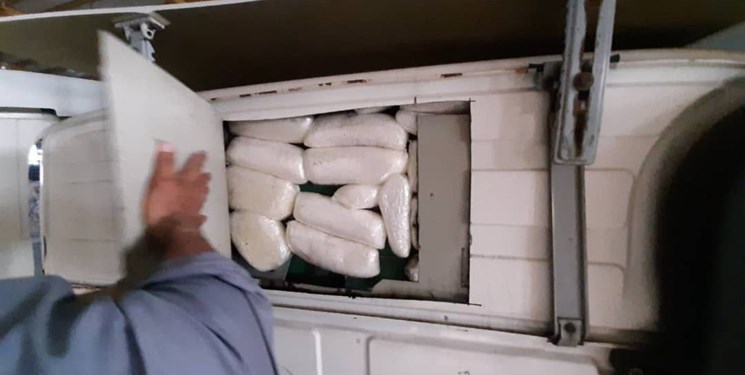
Customs officials discover 500 kilograms of crystal meth in a truck crossing from Afghanistan.
The discovery of a 500 kg shipment of crystal meth today marks the sixth large shipment discovered.
In the world of narcotics sales, Afghanistan has long been the world’s top producer of illegal opium. However, the excerpted article from general interest Iranian website Newsin.ir reports that a customs inspector at Mahiroud, an Iranian border post near the midpoint of Iran and Afghanistan’s 572-mile frontier, recently intercepted a truck carrying 500 kg of crystal meth coming from Afghanistan. Crystal meth is made from the ephedra plant, widely available in Afghanistan. That the seized haul was crystal meth suggests that the Taliban are expanding their embrace of the illicit economy beyond the sale of opium. Presumably, the Taliban seek to raise funds as they struggle with the responsibility of going from insurgents to national rulers, responsible for funding ordinary government operations. To that end, Afghanistan’s illegal narcotics have created numerous problems for Iran. Not only does Iran serve as a transport corridor for the illicit products from Afghanistan, but its citizens are also consumers. Moreover, while Iran fights its own domestic drug war at great cost in blood and treasure, many within the Iranian regime are also complicit in the trade and fan the flames of organized transnational organized crime.
Source:
“Kashef-e Mohamuleh 500 Kilo-ye Shisha dar Morzha-ye Sharq-e Tawsat Gomrak (Discovery of 500 kilograms of Crystal Meth at Eastern Border Customs),” Newzin (general interest Iran news website), 4 September 2022. https://newsin.ir/fa/content/24366494
…Farideh Zubaydi, deputy legal and customs supervisor, said, “Since the beginning of this year [March 21, 2022], customs discovered five large shipments of narcotics, mainly shipments of meth with Afghan origins. Today’s discovery makes that six major discoveries. He added: “Shipments of 580 kg, 153 kg, 400 kg, 61 kg and 1118 kg of narcotics had been discovered by customs colleagues since the beginning of the year. The discovery of a 500 kg shipment of crystal meth today marks the sixth large shipment discovered by customs. With divine blessings, while taking advantage of minimum available facilities, our colleagues this morning at Mahiroud Customs post in South Khorasan province were able to discover 500 kilograms of crystal meth that was professionally embedded in the tanker floor of the truck from Afghanistan.
Iran’s Customs Deputy added: “Reports received from Mahiroud Customs in South Khorasan indicate that at 9:30 a.m., the trainer of the drug-sniffing dogs of this post was inspecting a white tanker truck driven by an Afghan national, and taking into account the risk indicators, managed to discover the professional placement of 500 one-kilogram packets of crystal meth.
Image Information:
Image: Customs officials discover 500 kilograms of crystal meth in a truck crossing from Afghanistan.
Source: Fars News Agency https://media.farsnews.ir/Uploaded/Files/Images/1401/06/14/14010614000228_Test_PhotoN.jpg
Attribution:

